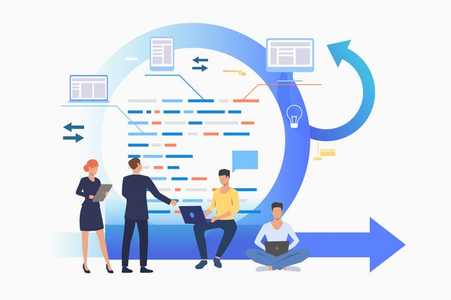Insights > Iterative development: Why building bit by bit beats grand reveals
PublishedIterative development: Why building bit by bit beats grand reveals

The old way of building digital products is broken.
You know the drill – months of requirements gathering, massive specification documents, and then the big, dramatic project launch where everyone hopes for the best. And when it inevitably misses the mark? More budget, more time, more headaches.
There's a better approach. It's called iterative development, and it's how smart teams are building better products faster while spending less. Here's why it works and how to do it right.
What is iterative development, really?
Forget textbook definitions. At its core, iterative development means:
- Building in small, functional chunks
- Getting real feedback on each piece
- Adapting based on what you learn
- Repeating until you've got something that genuinely solves the problem
Think of it as building a house where you make one room livable at a time, rather than waiting until the entire structure is finished to discover the kitchen is in the wrong place.
Why traditional development fails
The waterfall approach (plan everything, build everything, test everything, launch everything) seems logical but falls apart in practice because:
- Requirements change during development
- Users don't know what they want until they see something tangible
- Business conditions shift while you're heads-down building
- Problems compound when they're discovered late
5 best practices that actually work
1. Slice your project into valuable pieces
Don't just break your project into technical components. Break it into pieces that deliver actual value. Each iteration should give users something new they can use and provide feedback on.
Example: Instead of building "the database" then "the backend" then "the frontend," build "the ability to create a basic profile" end-to-end first, even if it's limited.
2. Keep cycles short and consistent
Two-week cycles work well for most teams. Long enough to build something meaningful, short enough to course-correct quickly.
The consistency creates rhythm. Your team knows exactly when they'll demo progress, when they'll plan the next steps, and when they'll ship.
3. Make demo day sacred
End every cycle with a real demonstration to stakeholders. Not a PowerPoint, not a status report—show the actual working product.
Ask three questions:
- What's working well?
- What's missing or confusing?
- What should we prioritize next?
This keeps everyone aligned and invested in the process.
4. Measure what matters
For each iteration, define what success looks like in user terms, not technical completeness:
- Can users accomplish X task?
- Are they getting stuck at point Y?
- How long does it take them to complete Z?
This keeps development focused on outcomes, not outputs.
5. Build a feedback loop that actually works
Most feedback systems fail because they're too cumbersome. Make yours dead simple:
- Use tools that capture feedback in the moment
- Create a dedicated channel for urgent issues
- Schedule regular user testing sessions
- Track everything in one place the whole team can access
Signs your iterative process is working
You'll know you're doing it right when:
- Your team is shipping regularly without drama
- Stakeholders are engaged, not surprised
- Quality issues get caught early
- The roadmap changes based on real insights
- The final product actually solves the problem it was meant to
Common pitfalls to avoid
Iterative development can go wrong when:
- Teams still try to plan everything upfront
- Feedback doesn't make it back into the development process
- "Iterative" becomes an excuse for sloppy work
- Technical debt builds up because "we'll fix it later"
- Teams don't carve out time to reflect and improve their process
Getting started
If you're stuck in waterfall mode, don't try to change everything overnight. Start with one project or one component:
- Identify something valuable you can build in 2-3 weeks
- Build it end-to-end, even if limited
- Get it in front of real users
- Learn and adapt
- Repeat
Each successful cycle builds confidence in the approach.
The bottom line
Iterative development isn't just a methodology—it's a mindset shift from "getting it perfect eventually" to "getting it better continuously."
The teams that win aren't the ones with the biggest budgets or the most detailed plans. They're the ones that learn and adapt the fastest.
Start small. Ship often. Listen carefully. Improve relentlessly. That's how you build products that actually matter.
Ready to put these iterative principles into action? Indie Ridge helps businesses build better digital products without the bloat and overhead. We're a team of hands-on developers who value simplicity, speed, and solutions that actually work. Get in touch for a no-fluff conversation about your project. No sales pitch, just straight talk about how we can help. #BuildBetter
